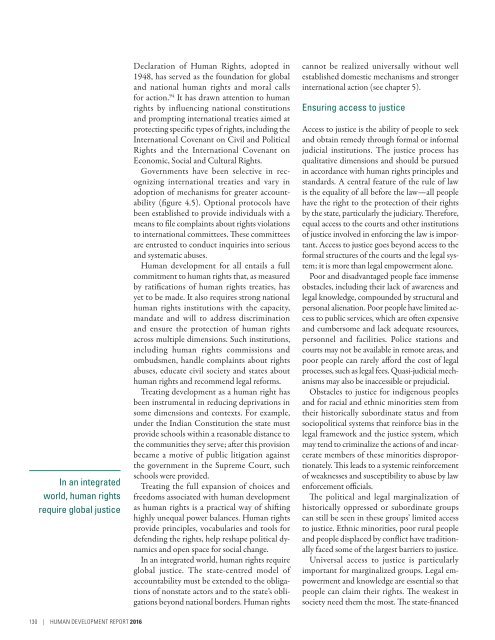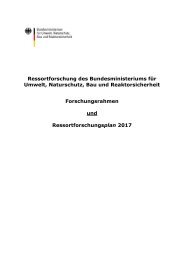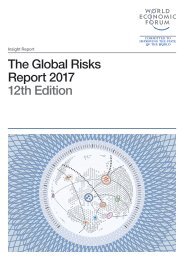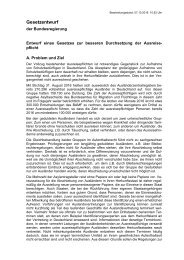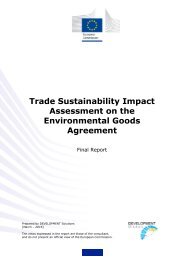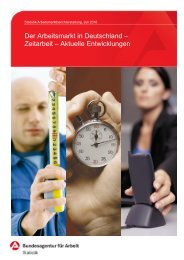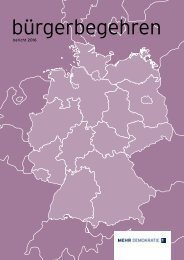Human Development Report 2016
6Tyccfrzw
6Tyccfrzw
You also want an ePaper? Increase the reach of your titles
YUMPU automatically turns print PDFs into web optimized ePapers that Google loves.
In an integrated<br />
world, human rights<br />
require global justice<br />
Declaration of <strong>Human</strong> Rights, adopted in<br />
1948, has served as the foundation for global<br />
and national human rights and moral calls<br />
for action. 94 It has drawn attention to human<br />
rights by influencing national constitutions<br />
and prompting international treaties aimed at<br />
protecting specific types of rights, including the<br />
International Covenant on Civil and Political<br />
Rights and the International Covenant on<br />
Economic, Social and Cultural Rights.<br />
Governments have been selective in recognizing<br />
international treaties and vary in<br />
adoption of mechanisms for greater accountability<br />
(figure 4.5). Optional protocols have<br />
been established to provide individuals with a<br />
means to file complaints about rights violations<br />
to international committees. These committees<br />
are entrusted to conduct inquiries into serious<br />
and systematic abuses.<br />
<strong>Human</strong> development for all entails a full<br />
commitment to human rights that, as measured<br />
by ratifications of human rights treaties, has<br />
yet to be made. It also requires strong national<br />
human rights institutions with the capacity,<br />
mandate and will to address discrimination<br />
and ensure the protection of human rights<br />
across multiple dimensions. Such institutions,<br />
including human rights commissions and<br />
ombudsmen, handle complaints about rights<br />
abuses, educate civil society and states about<br />
human rights and recommend legal reforms.<br />
Treating development as a human right has<br />
been instrumental in reducing deprivations in<br />
some dimensions and contexts. For example,<br />
under the Indian Constitution the state must<br />
provide schools within a reasonable distance to<br />
the communities they serve; after this provision<br />
became a motive of public litigation against<br />
the government in the Supreme Court, such<br />
schools were provided.<br />
Treating the full expansion of choices and<br />
freedoms associated with human development<br />
as human rights is a practical way of shifting<br />
highly unequal power balances. <strong>Human</strong> rights<br />
provide principles, vocabularies and tools for<br />
defending the rights, help reshape political dynamics<br />
and open space for social change.<br />
In an integrated world, human rights require<br />
global justice. The state-centred model of<br />
accountability must be extended to the obligations<br />
of nonstate actors and to the state’s obligations<br />
beyond national borders. <strong>Human</strong> rights<br />
cannot be realized universally without well<br />
established domestic mechanisms and stronger<br />
international action (see chapter 5).<br />
Ensuring access to justice<br />
Access to justice is the ability of people to seek<br />
and obtain remedy through formal or informal<br />
judicial institutions. The justice process has<br />
qualitative dimensions and should be pursued<br />
in accordance with human rights principles and<br />
standards. A central feature of the rule of law<br />
is the equality of all before the law — all people<br />
have the right to the protection of their rights<br />
by the state, particularly the judiciary. Therefore,<br />
equal access to the courts and other institutions<br />
of justice involved in enforcing the law is important.<br />
Access to justice goes beyond access to the<br />
formal structures of the courts and the legal system;<br />
it is more than legal empowerment alone.<br />
Poor and disadvantaged people face immense<br />
obstacles, including their lack of awareness and<br />
legal knowledge, compounded by structural and<br />
personal alienation. Poor people have limited access<br />
to public services, which are often expensive<br />
and cumbersome and lack adequate resources,<br />
personnel and facilities. Police stations and<br />
courts may not be available in remote areas, and<br />
poor people can rarely afford the cost of legal<br />
processes, such as legal fees. Quasi-judicial mechanisms<br />
may also be inaccessible or prejudicial.<br />
Obstacles to justice for indigenous peoples<br />
and for racial and ethnic minorities stem from<br />
their historically subordinate status and from<br />
sociopolitical systems that reinforce bias in the<br />
legal framework and the justice system, which<br />
may tend to criminalize the actions of and incarcerate<br />
members of these minorities disproportionately.<br />
This leads to a systemic reinforcement<br />
of weaknesses and susceptibility to abuse by law<br />
enforcement officials.<br />
The political and legal marginalization of<br />
historically oppressed or subordinate groups<br />
can still be seen in these groups’ limited access<br />
to justice. Ethnic minorities, poor rural people<br />
and people displaced by conflict have traditionally<br />
faced some of the largest barriers to justice.<br />
Universal access to justice is particularly<br />
important for marginalized groups. Legal empowerment<br />
and knowledge are essential so that<br />
people can claim their rights. The weakest in<br />
society need them the most. The state-financed<br />
130 | HUMAN DEVELOPMENT REPORT <strong>2016</strong>


